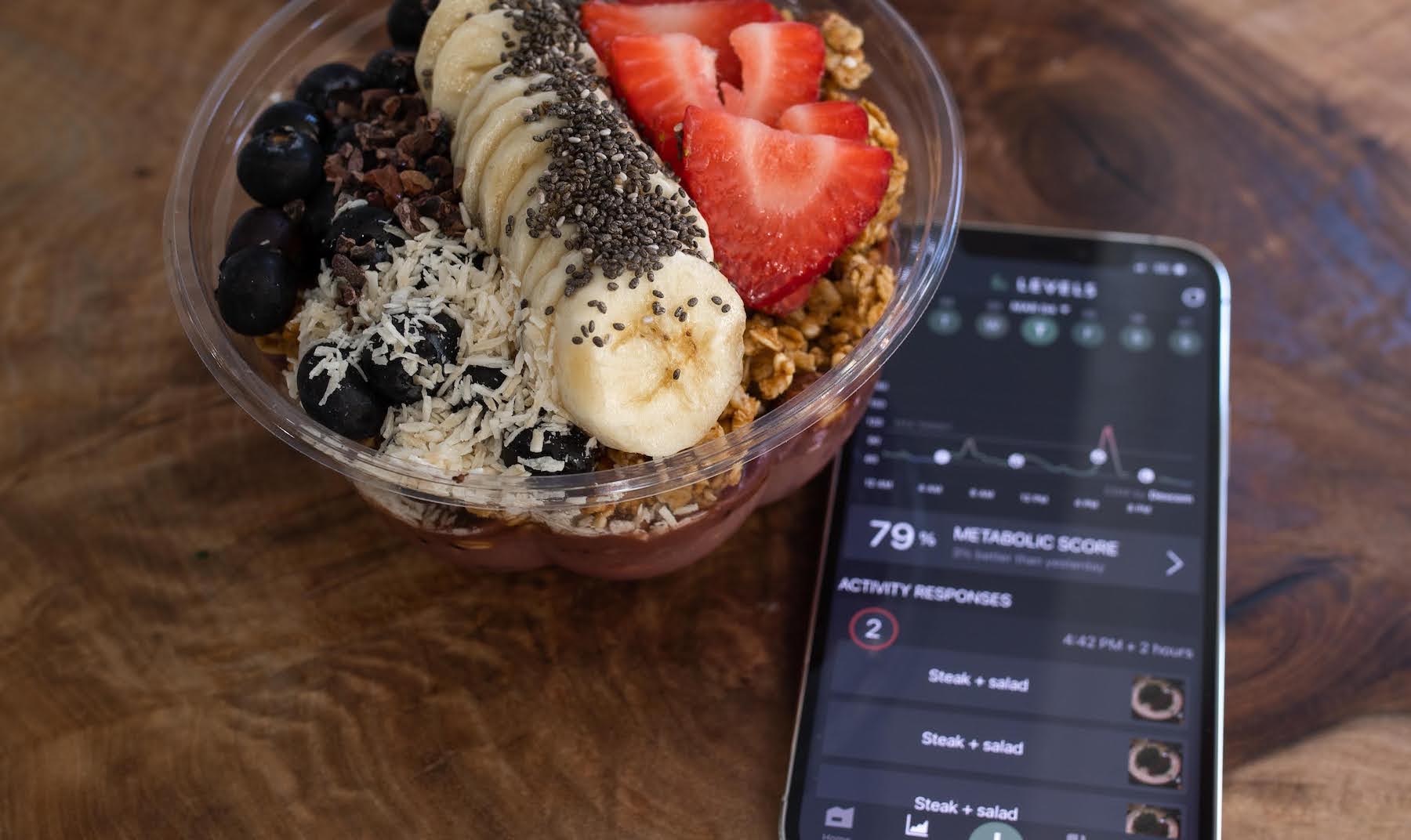We expect our blood glucose levels to exhibit some fluctuation throughout the day and between days. Food, exercise, mood, stress, and sleep can all lead to a small rise and fall. We call these changes glucose (or glycemic) variability, and it’s a normal part of our body processing glucose.
However, the degree of variability matters.
High levels of variability will leave your glucose line looking like jagged peaks and deep ravines. That is not a state we want our body to be in, and over time it can lead to significant health problems. Instead, we want to aim for low variability: flatter valleys and low-rolling hills.
The biggest impact on glucose fluctuations typically comes from our diet. Eating foods with added sugars or high levels of carbohydrates can cause a sudden increase in glucose, which shows up as a spike in your glucose line. This causes our body to release a relatively larger amount of insulin to move that excess glucose out of the blood and into the cells. Often, the aftermath of a spike is a blood sugar crash as your body overcorrects for that surge with so much insulin.
(Intense exercise can also cause a sharp rise and fall, caused by a very different process of glucose being released by the liver to fuel the muscle.)
Why Do We Want to Avoid High Variability?
Frequent spikes and subsequent insulin surges can cause health problems over time, including insulin resistance. Blood sugar crashes (which can result in hypoglycemia, or low blood sugar) can cause more immediate effects like fatigue, depression, and anxiety.
However, variability itself has negative consequences as well over the long term. Studies show that these big spikes and dips in glucose can damage tissues and endothelial function more than elevated but stable glucose levels (hyperglycemia). Extreme glucose variability has been flagged as a potential risk factor for cardiovascular disease, diabetes, and metabolic dysfunction.
This kind of oscillation may be more prevalent among people with “normal” glucose profiles than previously realized. A 2018 study reported that 16 out of 20 participants who were classified as normal on standard clinical tests experienced severe post-meal glucose spikes (postprandial hyperglycemia) that reached into the prediabetic range 15 percent of the time.
We want to aim for low variability: flatter valleys and low-rolling hills.
High levels of variability can also be an indication that you’re becoming insulin resistant—your body is unable to use insulin efficiently to control glucose—and this impaired glycemic control is at the root of metabolic dysfunction.
Standard glucose blood tests can’t capture variability, as they take a snapshot of glucose values in a moment. And glucose blood tests, like HbA1C, that give you a rough average of your blood glucose over the past few months—though important and helpful for determining if you’re at increased risk of diabetes or cardiovascular events—can’t capture variability either. But self-monitoring blood glucose with a continuous glucose monitor can, and allows for real-time, constant feedback.
What is the Optimal Amount of Variability?
A normal average for the magnitude of glucose excursions (difference between high and low) for someone who’s not obese and doesn’t have diabetes is between 26-28 mg/dL. In contrast, a non-diabetic, morbidly obese person may have a glycemic excursion range approaching 50 mg/dL, indicating more variability.
We recommend trying not to exceed 110 mg/dL after a meal with no more than a 30 mg/dL rise from your pre-meal levels (and keeping your average glucose levels between 79 and 100 mg/dL). Research on optimal glycemic variability for people without diagnosed metabolic impairment (such as diabetes or prediabetes) is still scant, but some studies help point us to these values. One study using CGM in people without diagnosed metabolic dysfunction found that the average postprandial glucose peak was 99 mg/dL plus or minus 10.5 mg/dL, far less than the standard recommendation of 140 mg/dL. Another study using CGM in a general population found most people spent 96% of their time between 70 and 140 mg/dL.
Conclusion
Eating to maintain stable glucose levels is the best way to avoid high glycemic variability. That means avoiding refined carbohydrates and added sugar, and pairing carbohydrates with fat and protein. Other lifestyle factors matter, too, including sleep, stress (and oxidative stress), and exercise. Remember that long-term trends, versus short-term “fixes,” are what’s important for overall health and glucose control, so aim to have more days of stable, rolling glucose—and more time in range—than days of high glycemic variability.
Further Reading:
- What should your glucose levels be? Here’s the ultimate guide to healthy blood sugar ranges
- How to reverse prediabetes
- 12 glucose-lowering strategies to improve metabolic fitness








